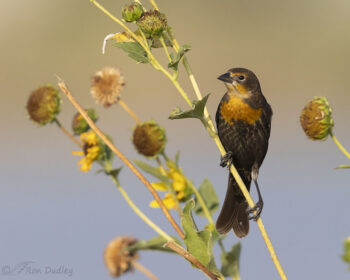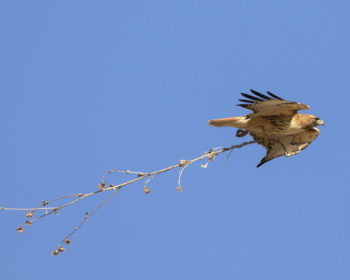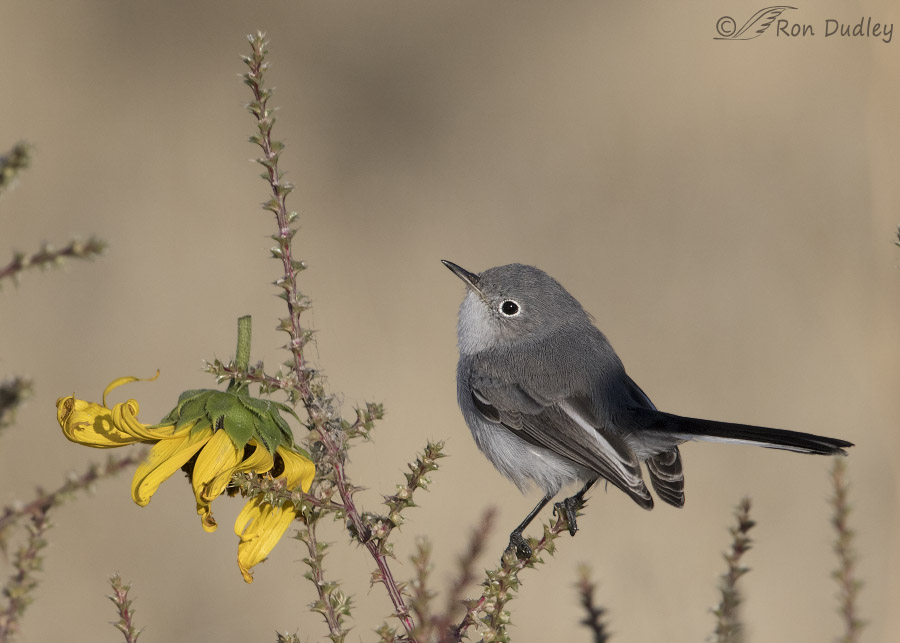Tag: sunflower
Red-tailed Hawk Carrying A Big Stick
Blue-gray Gnatcatcher In An “Unnaturally Natural” Setting
The American Goldfinch
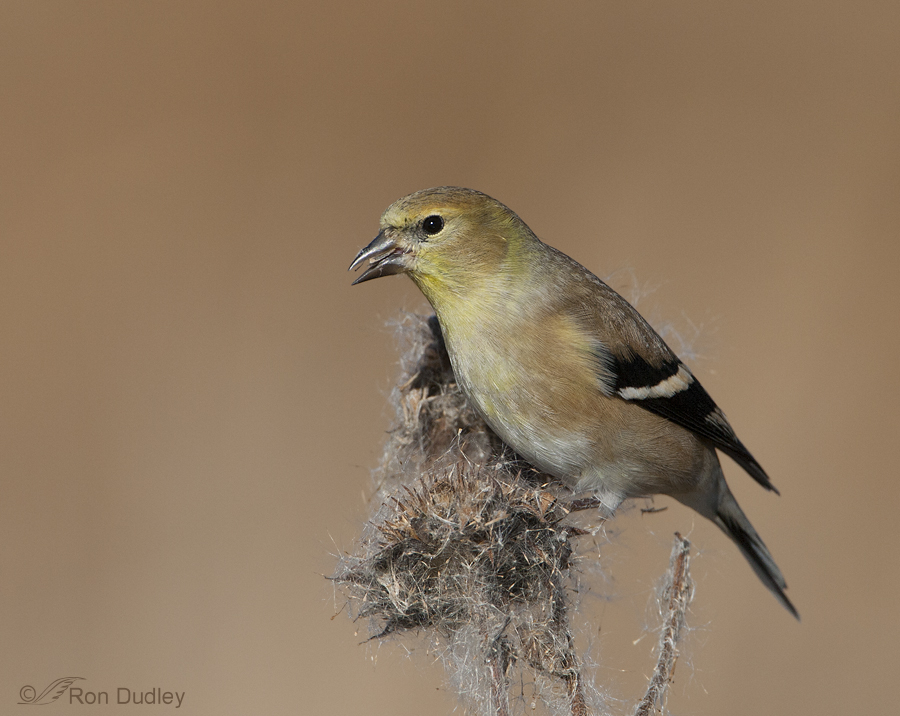
Due to ongoing copyright infringement issues I’ve recently spent enormous amounts of time registering many thousands of my images with the U.S. Copyright Office. During that process I ran across these American Goldfinch images that I’d essentially forgotten about. They were taken almost exactly 6 years ago (11/18/2007) when I was first learning bird photography.
White-crowned Sparrows – Sunflower Gluttony And Crossed Bills
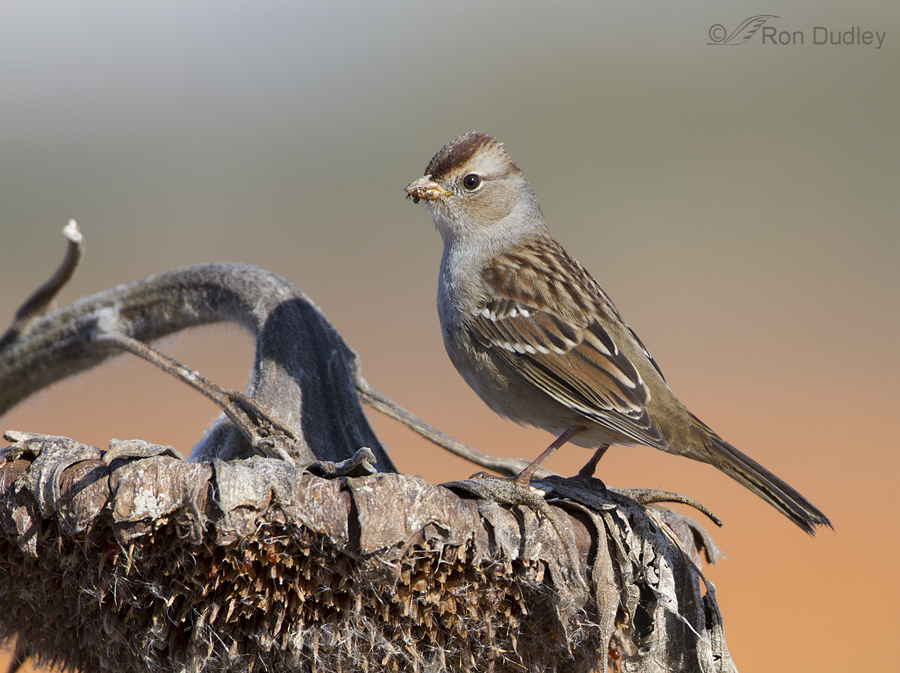
A local pumpkin farmer (Pack Farms) plants sunflowers along the periphery of his pumpkin field and each fall they provide a messy bounty for a variety of birds. Most species seem to be tidy eaters but the juvenile White-crowned Sparrows are an exception.
The orange in the background of these shots is – you guessed it – pumpkins.
Antelope Island – A Meadowlark Mecca
Antelope Island is still teeming with Western Meadowlarks and will be for the rest of the summer. Most are uncooperative but there are exceptions.
Perched Coyotes
A perch (when it’s not a fish) is defined as “a roost for a bird” or “a prominent resting place”. Most of the perched critters I photograph have feathers, but not all of them. Many mammals like to perch up high on rocks, small hills or other natural or man-made structures in order to have a better view of their surroundings. In the case of predators, like coyotes, they often do so while looking for prey. Some small mammals (prairie dogs and ground squirrels, for example) often elevate their position in order to watch for predators. 1/1000, f/6.3, ISO 640, 500 f/4, 1.4 tc Getting a clear, relatively unobstructed shot of a coyote can be very difficult because of the types of habitat they tend to prefer. But sometimes I don’t think it’s necessary to get them in the clear. This coyote was hunting voles just as the sun was coming up. It deliberately placed itself in the shade of the sunflowers to be less easily seen as it watched and listened for rodents. Even though only about half of the coyote is visible, I still like the shot because it shows behavior and I think the sunflowers add a nice touch. There’s just enough light in the right eye to make this work for me. 1/2500, f/7.1, ISO 500, 500 f/4, 1.4 tc But when the coyote alone is the primary subject of the image, a relatively clear view of the entire animal is often preferred. That’s when the photographer can take advantage of the…
An Itchy, Fidgety Burrowing Owl On A Wiggly Perch
It all started with an itch. 1/2500, f/6.3, ISO 640, 500 f/4, 1.4 tc Two days ago just as the sun was coming up over the Wasatch we found this adult Burrowing Owl perched on a dried sunflower. The lower background is the Great Salt Lake. The bird was sunning itself and pretty static and I was hoping for some kind of action. 1/3200, f/6.3, ISO 640, 500 f/4, 1.4 tc Then it tried to scratch its face while perched on this spindly and unstable perch and that’s when the action began. (Full disclosure – this shot is a little out-of-order but it shows the scratching behavior better than any I got at the very beginning – it tried to scratch the same spot on its face several times during this sequence). 1/2500, f/6.3, ISO 640, 500 f/4, 1.4 tc Every time the owl tried to scratch its face the sunflower stem would move around and throw the bird off-balance so the wings would go out and I got some interesting poses in nice light. 1/2500, f/6.3, ISO 640, 500 f/4, 1.4 tc I was able to get many images of the balancing act as it progressed but the owl was sidelit so in quite a few of them one or both of the wings and one side of the face were in shadow. These are the images with the best pose and light combinations that I was able to get. The secondary wing feathers seem to be still growing in from a recent molt. …
A Wonderful Antelope Island Morning – Including A Long-tailed Duck
It’s been a frustrating photography week for both Mia and I for a variety of reasons but it’s primarily been because the weather and light have seriously sucked – big time!. So when yesterday’s dawn showed promise we headed for the island with high hopes but low expectations because there haven’t been many bird opportunities out there recently. We were in for some pleasant surprises. I’ll present these images in the order they were taken to give a feel for the morning. 1/2500, f/7.1, ISO 500, 500 f/4, 1.4 tc We had barely made it onto the causeway before this Rough-legged hawk began to entertain us. We watched as it ate a vole and then it immediately walked about two feet to its left and picked something else up with its foot. At first I assumed it was another vole, either alive or from a food cache. But in looking at close-ups of some of the photos I’m pretty sure it’s only a rock with old brine fly larvae cases and small twigs frozen to it. Then this hawk did something strange – it transferred the “rock” to its beak and deliberately flung it a good distance – here it’s flying through the air Then the bird walked over, picked up the rock in its left foot and flew off with it. My curiosity is killing me as to just what was going on. Obviously this isn’t a great shot but I was fascinated by the behavior. 1/2000, f/7.1, ISO 500, 500 f/4, 1.4 tc Next this Northern Harrier gave us…
Horned Lark On Wild Sunflowers
I’ve always had a soft spot for Horned Larks because they remind me so much of growing up on the family farm in nw Montana. But in virtually all of my images of them they’re perched on rocks or on the ground. 1/2000, f/7.1, ISO 640, 500 f/4, 1.4 tc Earlier this week I found this male perched on – yes, another rock. But while I was photographing him he flew to this nearby sunflower head and started picking seeds out of it. I like the setting and that you can see the seed in the beak with the seed husk blowing away in the breeze under the wing-tip. Ron
A Loggerhead Shrike, a Spider and Spit
A few days ago Mia and I found this Loggerhead Shrike sitting prettily on a dried sunflower on Antelope Island. The bird was using the sunflower as a hunting perch. 1/1600, f/8, ISO 500 I’ve always been amazed by the incredible eyesight of many bird species. This shrike somehow spotted a spider crawling through the thick grass about 20 feet away from where it was perched and immediately flew down to grab it. 1/1600, f/7.1, ISO 500 It was a relatively small spider and I have no idea how the shrike was able to see it in all the dense grass. Even though the background is busy here I still liked the shot for the interesting look at both the spider and the tongue of the shrike. It’s my presumption from looking at this photo that the saliva of the shrike is viscous and sticky, enabling the prey to stay attached to the tongue during the very fast process of pulling the spider to the back of the throat with the tongue. 1/1600, f/7.1, ISO 500 A heavily cropped, close-up view of the same image provides a clue. You can see that there’s a sheet of saliva stretched between the bottom of the tongue and the floor of the lower mandible and it does appear to be quite viscous. I had no idea that it would be so “juicy” in there. Nothing earth-shattering here, just some avian trivia in a photo that I found interesting (yes, my interests can be…


